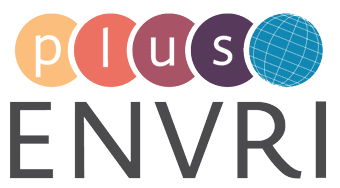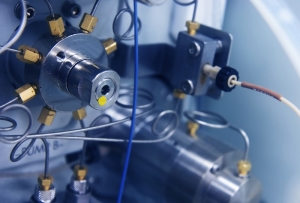T1 – Technical Innovation
Theme Leader: Jean Daniel Paris (CEA)
Scientific observations and the related technologies are the foundation of many Environmental Research Infrastructures. The diverse community contributing to ENVRIplus uses a large variety of technologies, measuring parameters ranging from atmospheric concentration of trace gases through metabolomics to detect biodiversity and deep ocean salinity to Earth crust motions. However, the numerous technologies available rely on a few fundamental physical principles and have several technical aspects in common. Ample opportunity for collaborative work across disciplines exists. The goal of Theme 1 is to ensure common development and application efforts and generate innovation that is not possibly achieved by single Research Infrastructure.
WP 1 – New sensor technologies: innovation and services
The scientific observations made in the Research Infrastructures rely on measurement instrumentation. High performance instrumentation development is a highly innovative domain, intensive and extensive parameters ranging from atmospheric concentration and column amount of trace gases and aerosols to ocean salinity to Earth crust motions. While technologies evolve, only a few fundamental physical principles underlie all measurements. There is ample opportunity for collaborative work across disciplines to share development and application efforts and generate innovation. The objectives of this WP are the following:
1) Consolidating Research Infrastructure requirements for new sensors and the associated market,
2) Defining common approaches for sensor requirements across disciplines,
3) Defining modalities for use of common technical unmanned platforms and application,
4) Promoting the use of Network-enabled sensors across the Research Infrastructures.
Contact WP1 leader Jean Francois Rolin for more details
WP 2 – Metrology, quality and harmonization
Delayed or real time observations performed by networks of instruments are generally used in conjunction with other data, including data from other observatories, in situ or from space, or from long time series. Introducing heterogeneous data that are not directly comparable with each other commonly generate biases in the results of scientific users. Harmonization serves the fundamental purpose of enabling the unbiased usage of data. Data flowing from observation networks has to be harmonized in a scientific and metrological sense. There is a crucial need to improve comparability between Research Infrastructure networks and traceability to standard (SI) units and metrological norms. In addition, all Research Infrastructures are facing difficulties with using long time-series lacking harmonized calibration and change in instrumentation. The WP will also address strategies to cope with existing non-harmonized data sets, in particular regarding the issue of satellite validation. The objective of this WP is to:
1) Address the needs for standardization of measurements and methods across the Research Infrastructures,
2) Develop new services to promote use of heterogeneous time series produced by Research Infrastructures,
3) Develop new services to meet requirements for using heterogeneous networks for satellite validation.
Contact WP2 leader Vito Vitale for more details
WP 3 – Improving measurement networks: common technological solutions
A number of Environmental Research Infrastructures comprise a distributed infrastructure with cascading networks of in situ observatories from large-scale networks of platforms or sites to local networks of various sensors. Network operation is usually a cumbersome aspect of these Research Infrastructures facing specific technological problems related to operations in remote areas, maintenance of the network, transmission of information, etc. The burden increases with remoteness of the station, which is a common feature here. Existing Research Infrastructures have developed ad-hoc solutions to overcome specific problems and we expect that common activities toward network integration are anticipated to generate important cross fertilization across the infrastructures. In addition, robust inter-connexion within and across these networks is still in an infancy level and various innovative technologies are becoming available. Specific objectives of this WP are:
1) To review the existing technologies addressing energy production at remote sites, data transmission and adaptation of technologies to extreme conditions used by Research Infrastructures,
2) To propose innovative solutions including testing of components, subsystems, materials, techniques and dedicated software to improve networking at distributed Research Infrastructures,
3) Evaluate potential for improved standardization of transmission technologies among Research Infrastructures and benefits for the cluster.
Contact WP3 leader Helle Pedersen for more details
WP 4 – Joint operations across the Research Infrastructure domains
Common activities toward network integration are anticipated to generate important cross fertilization across the infrastructures. Moreover, some important scientific questions can only be answered by clustering the observations of several Research Infrastructures. In this work package, through different use-cases, we aim at developing common network design, sharing of methodologies and protocols, instrumentation deployment, including the development and field-testing of integrated observatories. More integrated networks also offer potential to increase the spatial coverage of each individual network by putting in common several sites and participate to opportunities launched by international organization and industry (e.g. “green repeater” initiative). Therefore this WP is strongly linked to the Theme 3 (Access to Research Infrastructures). The objective of this WP is:
1) To address strategies for enhancing common Research Infrastructure field operations,
2) To perform 2 proof-of-concept experiments joining expertise from several Research Infrastructures.
Contact WP4 leader Jean Daniel Paris for more details


